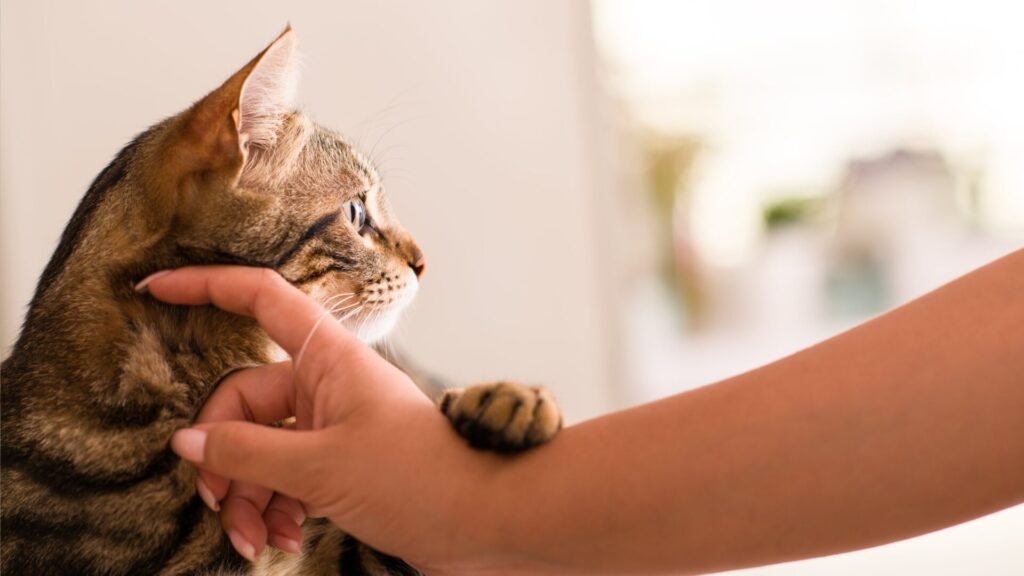Can Cats Get Diabetes? How to Care for a Diabetic Cat
Posted on December 6, 2023 by Pinnacle Vet Clinic

As we mentioned in our last blog post, diabetes is not just a human affliction. Cats can also develop diabetes, and it is important to be aware of the symptoms and dangers of the disease. As a cat owner, it is crucial to know how to check your cat’s blood sugar level and what to feed a diabetic cat.
Symptoms of Diabetes in Cats:
The symptoms of diabetes in cats are similar to those in humans. The most common symptoms include:
- Increased thirst and urination
- Increased appetite but weight loss
- Vomiting
- Lethargy
- Weakness in the hind legs
- Dehydration
If you notice any of these symptoms in your cat, you should take them to the vet as soon as possible. Diabetes can be a life-threatening condition if left untreated.
What is Dangerously High Blood Sugar for a Cat?
A normal blood sugar level for a cat ranges from 80 to 120 mg/dL. A blood sugar level of 250 mg/dL or higher is considered dangerously high and requires immediate medical attention. If your cat is diagnosed with diabetes, you may need to monitor their blood sugar levels at home using a glucose meter.
How to Check a Cat’s Blood Sugar:
Checking a cat’s blood sugar level at home requires a glucose meter, test strips, and a lancet. You can ask your veterinarian to show you how to check your cat’s blood sugar level at home.
What is Cat Sugar?
Cat sugar is another name for glucose, which is the primary source of energy for the body. In cats with diabetes, their bodies cannot properly process glucose, leading to high blood sugar levels.
What Glucose Level is Too Low for Cats?
A glucose level below 80 mg/dL is considered too low for cats. If your cat’s blood sugar drops too low, they may experience seizures, coma, or even death. It is important to monitor your cat’s blood sugar level and adjust their insulin dose if necessary.
What to Feed a Diabetic Cat:
Feeding a diabetic cat requires a specialized diet that is low in carbohydrates and high in protein. This is because carbohydrates are converted into glucose in the body, which can cause a spike in blood sugar levels. A high-protein diet can help regulate blood sugar levels and maintain a healthy weight.
Your veterinarian can recommend a suitable diet for your cat, which may include prescription cat food or homemade meals. It is important to stick to the recommended diet and avoid giving your cat treats or table scraps that can disrupt their blood sugar levels.
How to Care for a Diabetic Cat:
Caring for a diabetic cat requires regular dedication from pet owners such as:
- daily insulin injections
- monitoring their blood sugar level
- feeding them an specialized diet
- Encouraging daily exercise routines
Your veterinarian will prescribe the appropriate insulin dose for your cat based on their weight and blood sugar level. You will need to administer the insulin injection at the same time every day, typically after a meal.
It is important to monitor your cat’s blood sugar level regularly, either at home or at the vet’s office, to ensure that their insulin dose is working effectively. Exercise is also important for diabetic cats, as it can help regulate blood sugar levels and maintain a healthy weight. However, you should consult with your veterinarian before starting any exercise program.
Finally, regular check-ups with your veterinarian are crucial for monitoring your cat’s condition and adjusting their treatment plan as necessary. With proper care and management, many diabetic cats can live long and healthy lives.
In conclusion, diabetes is a serious condition that can affect our pets’ lives, similar to humans. By being aware of the symptoms and dangers of the disease, you can help your beloved feline live a long and healthy life.
